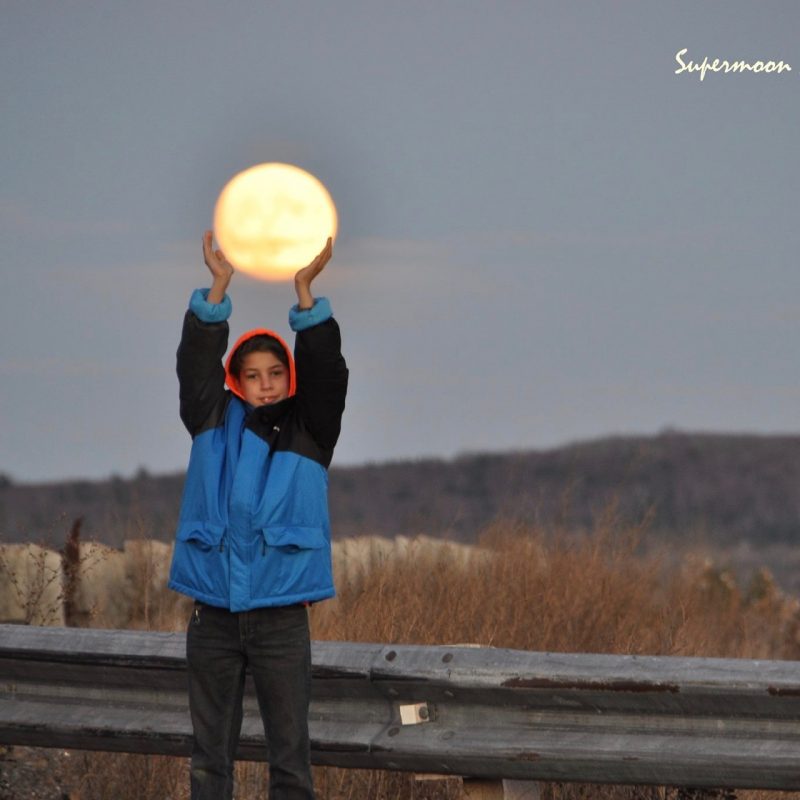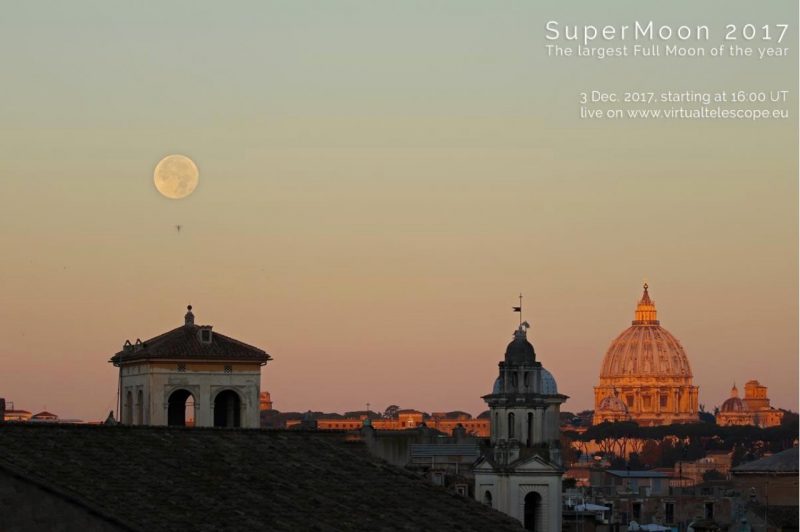
Tonight – December 3, 2017 – the full moon is what we in the Northern Hemisphere call a Cold Moon, Moon Before Yule, or Long Night Moon. It’s also the year’s one and only full supermoon. In other words, it comes close enough to Earth (222,443 miles or 357,987 km) to enjoy supermoon status. The astrologer Richard Nolle, who is credited with coining the term, defines a supermoon as:
… a new or full moon which occurs with the moon at or near (within 90% of) its closest approach to Earth in a given orbit.
According to that definition, that means any new moon or full moon coming closer than 362,000 km of Earth in 2017 counts as a supermoon.
Visit a cool new website! Daniel Cummings’ Star in a Star

This month, the full moon and lunar perigee – the moon’s closest point to Earth in its orbit – happen less than one day apart. The full moon comes on December 3, at 15:47 Universal Time (UTC), and lunar perigee takes place on December 4 at 8:42 UTC.
Full moon distance (2017 Dec 3 at 15:47 UTC): 357,987 km
Lunar perigee distance (2017 Dec 4 at 8:42 UTC): 357,492 km
This is in great contrast to the year’s farthest and smallest full moon on June 9, 2017, which closely aligned with lunar apogee – the moon’s farthest point from Earth in its monthly orbit. The June 2017 full moon was 252,443 miles (406,268 km) distant – or nearly 30,000 miles (50,000 km) farther away than this December 2017 full moon.
Full moon distance (2017 June 9 at 13:10 UTC): 406,268 km
Lunar apogee distance (2017 June 8 at 22:21 UTC): 406,401 km
The December 2017 supermoon features the first of three full moon supermoons in succession. The two full moons in January 2018 – on January 2 and 31 – also count as supermoons. As is typically the case, the second of these three full moon supermoons most closely coincides with lunar perigee, showcasing the closest and largest supermoon in this series of three.
Full moon distance (2017 Dec 3 at 15:47 UTC): 357,987 km
Lunar perigee distance (2017 Dec 4 at 8:42 UTC): 357,492 kmFull moon distance (2018 Jan 2 at 2:24 UTC): 356,846 km
Lunar perigee distance (2018 Jan 1 at 21:54 UTC): 356,565 kmFull moon distance (2018 Jan 31 at 13:27 UTC): 360,199 km
Lunar perigee distance (2018 Jan 30 at 9:54 UTC): 358,995 km
Some people will call the full moon on January 31 a Blue Moon because it’s the second of two full moons in one calendar month. Moreover, this supermoon will stage a total eclipse of the moon.
We can expect each full moon supermoon in this three-part succession to recur after 14 lunar months (14 returns to full moon). By the way, 14 lunar months represents a time period of about 1 year, 1 month and 18 days. In 2019, the second of three full moon supermoons will showcase the closest and largest supermoon of the series:
Full moon supermoons in 2019
Full moon distance (2019 Jan 21): 357,715 km
Full moon distance (2019 Feb 19): 356,846 km
Full moon distance (2019 Mar 21): 360,772 km
Read more: Super Blue Moon eclipse on January 31
Bottom line: The December 3, 2017 full moon is 2017’s only full supermoon. The two full moons in January 2018 – on January 2 and 31 – will also count as supermoons.











